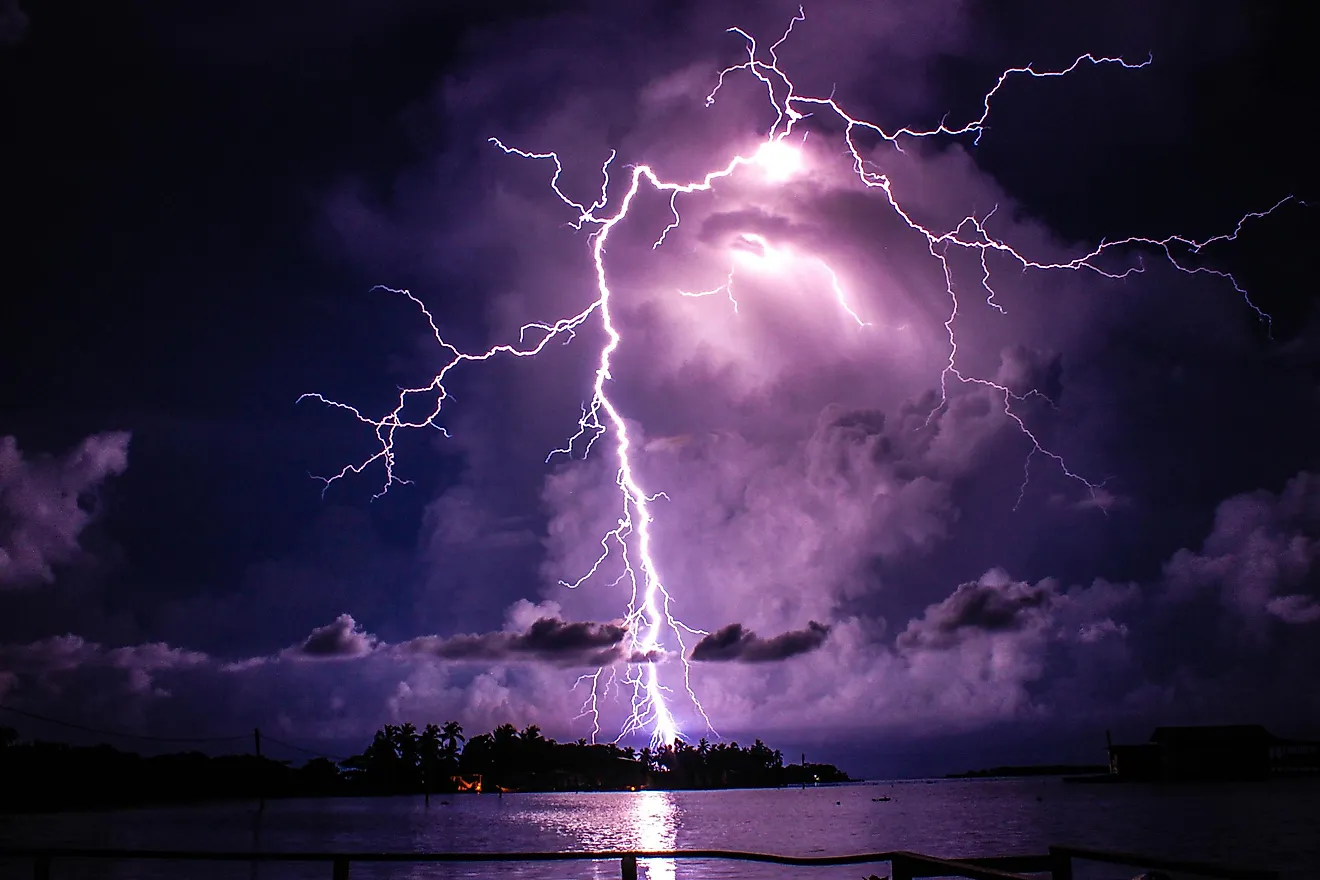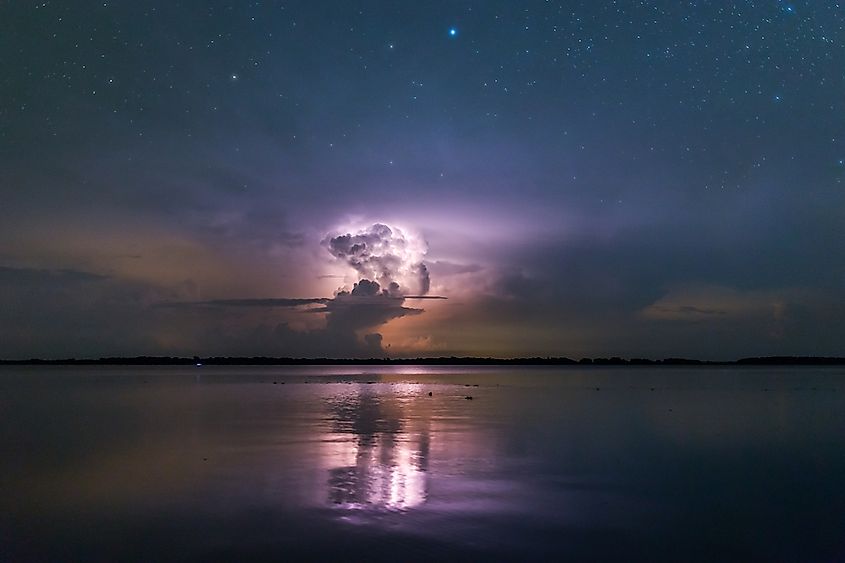The Beacon of Maracaibo: The Home Of The Lightning Storms

Venezuela's Lake Maracaibo sits at its rightful top position as the location with the highest concentration of lightning. An atmospheric event that occurs where the Catatumbo River enters the Lake Maracaibo became known as Catatumbo lightning. At this exact place, where the river enters South America's biggest lake, the lightning storm lights up the sky without stopping for nearly 10 hours per night, totaling 260 nights in just one year. At no other place on our planet, so much lightning concentrates in one spot, and so regularly. The phenomenon gained a poetic name "Beacon of Maracaibo" for its significance for navigation, and the river is known as a "river of fire."
The Spectacular Lake Maracaibo
As the static electricity discharges, it produces the strikes of lightning. With some delay, we can hear the thunder: a shock wave of sound created when the heat of the lightning compresses the surrounding air. The temperature can be hotter than the surface of the Sun!
Tropical Rainfall Measuring Mission (TRMM) is a satellite project of NASA and the Japan Aerospace Exploration Agency. For almost two decades, the satellite in the orbit of Earth has been collecting data on meteorological phenomena. Its Lightning Image Sensor has been tracking and recording flashes of light to produce the map of the lightning "top spots."
On a good night, shortly after dusk, the lightning strikes Lake Maracaibo or jumps in between the clouds up to twenty-eight times a minute. The storms are the most spectacular at the peak of the wet season around October and take a break mainly in the dryer months of January and February.

But Why Does This Happen?
The exact reason why this phenomenon occurs, or the model of the Catatumbo "perfect storm" have not necessarily been uncovered yet, so we caution you to take the following information with a grain of salt. For now, this record-breaking lightning show is attributed to a lucky combination of wind patterns, local weather, and topography.
A lot of the notable lightning spots are tied to the terrain features: slopes of mountain ranges, curved coastlines. And indeed, the Catatumbo region is surrounded by a wall of Andes in the shape of a letter V. The current hypothesis is that the mountains capture the enormous quantities of water evaporating off the lake each day under the equatorial sun and the warm trade winds blowing in off the Caribbean. The warmer masses lower into the Maracaibo basin, colliding with the cold air of the Andes. The collision of temperatures is the essential recipe for a thunderstorm. That combination of the topographical and atmospheric features alone would make it the location into a "cooking pot for thunderstorms."
Methane: A Possible Magnifying Factor
But some scientists suggest that another factor is increasing it: methane. Maracaibo basin is on top of one of South America's largest oil fields. More than 15,000 miles of gas and oil pipelines run across the lake floor. And if there is oil, one can certainly also find methane. The presence of methane seems to be especially highlighted in the lagoons right under the epicenter of the Catatumbo storm. Methane is a great conductor of electricity.
A lot of tourists are attracted to the Beacon of Maracaibo since, in many countries, thunderstorms and lighting are exceedingly rare. However, locals warn the unsuspecting tourists that the area is still under some unrest and militant groups from time to time, so you need to be cautious and have an experienced guide with you to enjoy this spectacular natural wonder safely.











